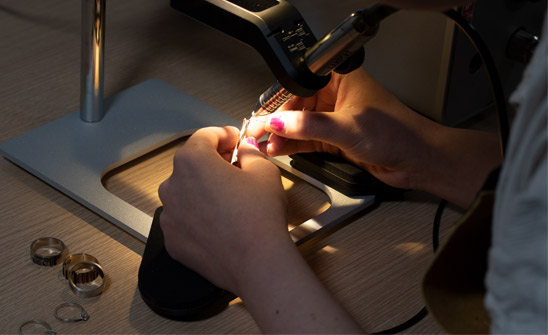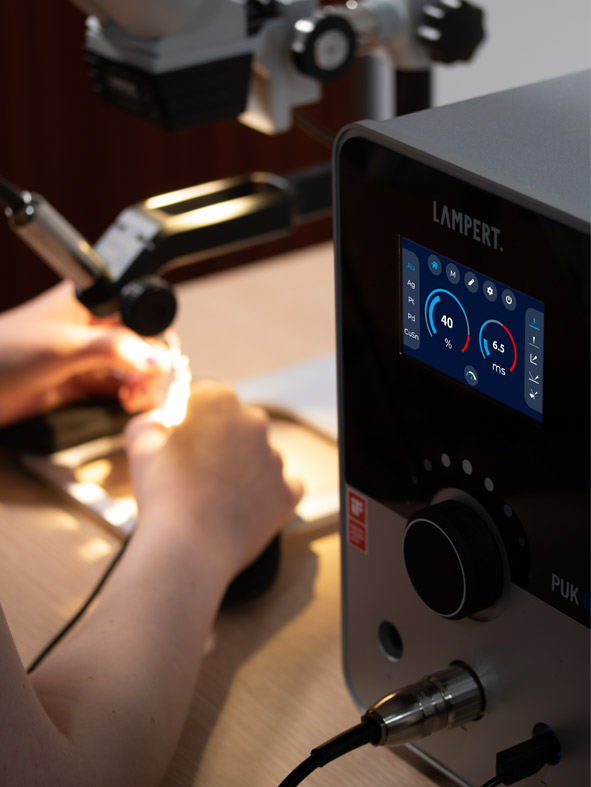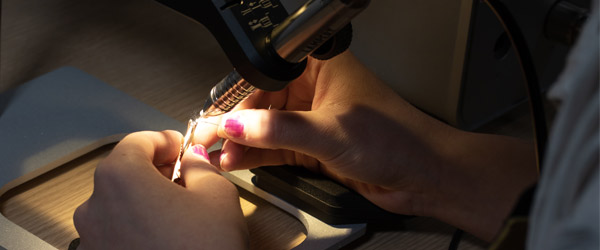Soldering is the process of joining two pieces of metal together. Soldering jewellery involves fusing a filler metal otherwise known as solder, into a joint. As an essential part of the jewellery making process, soldering allows jewellery makers to easily create a range of pieces without melting or damaging the metals they are working with.
As with many other areas of jewellery making, there are both traditional and modern approaches to different skills and soldering is no exception. In our continuous effort to help you in your jewellery making journey, we have taken a look at traditional soldering and soldering with a TIG welder to help you understand how each part of the soldering process can differ.
Re Tipping Prongs
Traditional – When re tipping a prong if the stone is heat sensitive you will have to take this out, with multiple stones this can be time consuming and risk a potential margin for error.
TIG Welder – You can weld with all the stones in place, and move the one prong back about 1mm allowing room for the mechanical pressure that the metal is about to impose on the stone. When metal melts, it wants to be concentric. When welding a prong next to a stone using the traditional method this can potentially put unseen pressure on the stone and could pop a corner.
You can avoid
- All of the work taking the stones out
- The work of clean up from the fire scale from the traditional method of soldering
- Pickling


Resizing Rings
Traditional – Will need to remove heat sensitive stones if necessary, so you can heat the whole ring and implement the solder joint.
TIG welder – When resizing a ring with a TIG welder, you can cut the ring, wherever you need, take a triangle file to the new joint, and file a ‘V’ in the ring. This will allow you to weld in the bottom of the root, and re-join the ring. Taking about a 26 gauge wire, of the same kind of metal that the ring is made of (for colour reasons) you can lay it lengthwise in the bottom of the root and weld at a 45 degree angle between the base of the ring and the side of the wire.
The heat level introduced to a joint will be low ensuring that stones should be able to endure, you will be able to hold the ring at all times to maintain control of your work.
Creative Work
Traditional – When doing creative work with solder, you find yourself wrapping things in wire to hold them tight. When heating this up, the head causes the metal to shrink or expand in different ways that make the piece move. Resulting in having to let it cool off, then reset it, and then heat it up again to do your solder joint.
TIG welder – The heat affected zone is so small that you can ‘tack’ pieces together. At this point, those that love solder can then heat the pieces up for soldering, without all of the headache of the wire and the shrinking/expansion.


Working with Jump Rings
Traditional – With torch and solder, some jump ring closure is simply impossible. E.g. when you need to close a jump ring on a cotton bracelet using a traditional torch and solder it will produce a high risk of burning the whole bracelet.
TIG Welder – This machine allows you to weld bear cotton, slate or almost anything sensitive. The heat affected zone is just mm allowing to close jump rings or make welds that were impossible to most before.
Find out more about using TIG welders by heading into our store for a demo or perusing our TIG welders on our site.


Cooksongold

